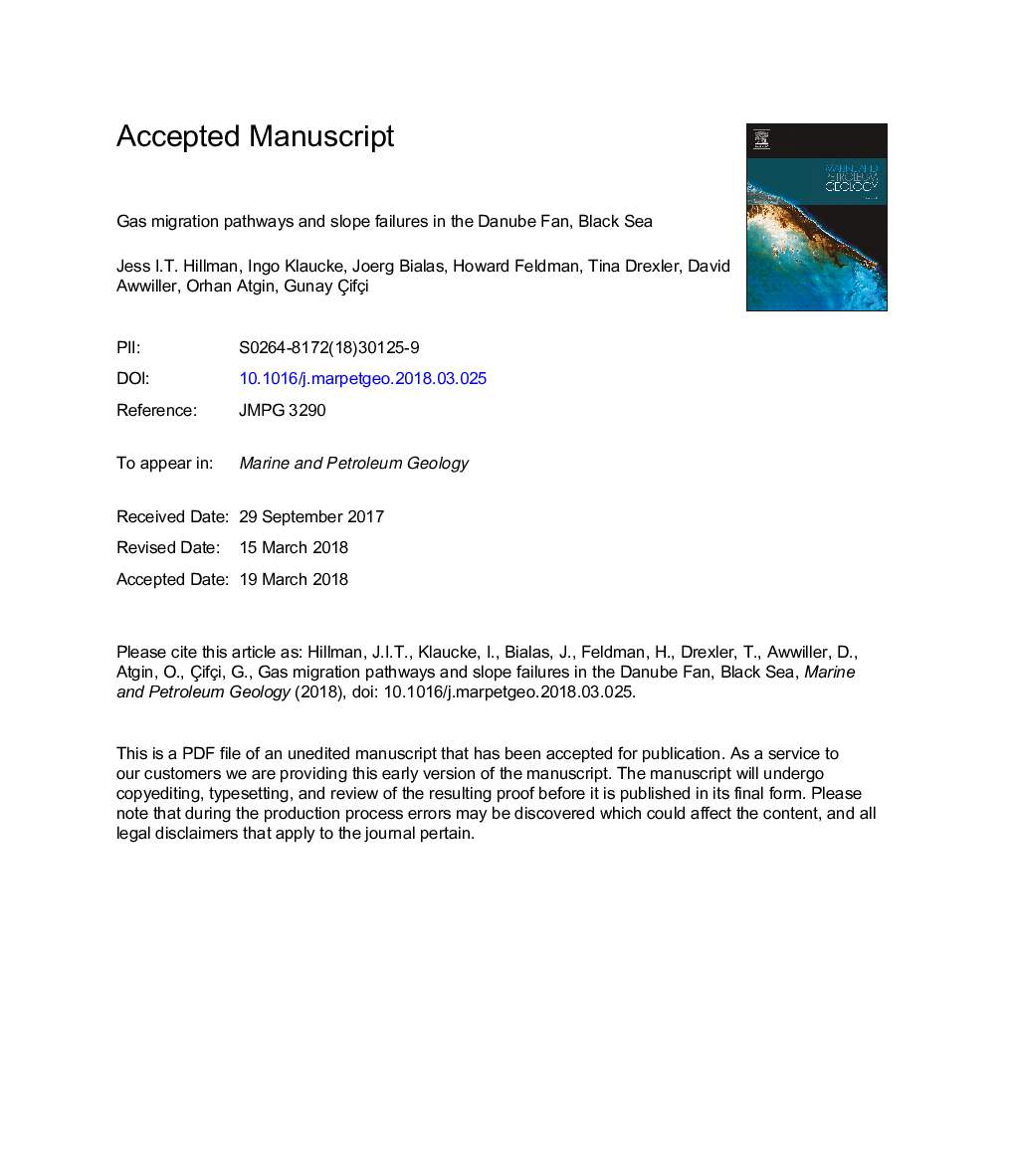| Article ID | Journal | Published Year | Pages | File Type |
|---|---|---|---|---|
| 8909207 | Marine and Petroleum Geology | 2018 | 43 Pages |
Abstract
A large geophysical dataset, including bathymetry, and 2D and 3D P-cable seismic data, revealed evidence of numerous gas flares near the S2 Canyon in the Danube Fan, northwestern Black Sea. This dataset allows us to investigate potential relationships between gas migration pathways, gas vents observed at the seafloor and submarine slope failures. Vertical gas migration structures as revealed in the seismics appear to be concentrated near submarine slope failure structures. Where these seismically defined features extend upwards to the seafloor, they correlate with the location of gas flares. However, not all these structures reach the seafloor, in some cases because they are capped by overlying sediments. A strong correlation is inferred between gas migration pathways, heterogeneous mass transport deposits and contacts between adjacent units of contrasting lithology. Although missing age constrains prevent a final judgement, we discuss the potential relationship between submarine slope failures and gas migration in order to determine if gas migration is a precursor to failure, or if the presence of slope failures and associated mass transport deposits facilitates the migration of gas. Our observations indicate that lithological heterogeneity, mass transport deposits and minor sediment deformation control gas migration pathways and the formation of gas chimney-like features. Gas migration is focused and gradual, resulting in gas flares where the chimney-like features extend to the seafloor, with no evidence of erosive features such as pockmarks.
Related Topics
Physical Sciences and Engineering
Earth and Planetary Sciences
Economic Geology
Authors
Jess I.T. Hillman, Ingo Klaucke, Joerg Bialas, Howard Feldman, Tina Drexler, David Awwiller, Orhan Atgin, Gunay Ãifçi, Shray Badhani,
